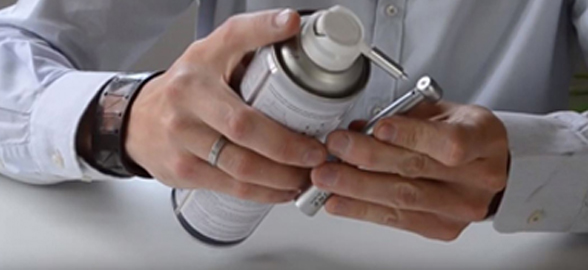During recent years implants have undergone a great evolution. Microscopic surfaces have been improved to increase bonding to the bone, the grade of titanium has been improved, which translates into greater mechanical load resistance, and bioengineering has also been applied in their design.
When the dentist> places the implant in the mouth, the patient is subjected to a large presence of bacteria, therefore the type of connection used between the implant and the prosthesis is very important.
What types of connections are there?
It is very important to know that implants have two types of connections: internal and external.
In this type of connection, the implant is connected to the abutment externally through the attachment screw. That is, the implant is not inserted into the bone, but stays outside.
Internal connection implants: In this case, the implant is designed with a shape that allows the abutment that joins the implant and the prosthesis, to be inserted a few millimeters inside the implant itself.
What type of connection should we choose?
Although external connection implants have been on the market for a longer period of time, they present certain problems, such as the case that the screw can become loose and could become deformed or break. This type of connection is appropriate in cases of divergence between implants, as it facilitates their rehabilitation and provides great resistance. To make up for these problems, internal connection implants appeared.
The internal connection implants provide great stability and sealing to the implant and prosthetic union. This type of solution minimises external connection problems: loosening and bacterial filtration. Additionally, it transmits the forces directly from the pillar to the internal hexagon and its stabilising area.
Types of dental implant connectors:
Internal hexagon:
It has the shape of a hexagon with an opening in the head of the dental implant in which the restoration is screwed. This type of design provides a more natural appearance and is considered more stable since it reduces stress.
External hexagon These connectors have been discontinued since they didn’t provide good stability.
Internal octagon It has an octagonal shape, so it is considered the safest. This type of implant manages to eliminate the adverse effects of the force distribution on the prosthesic and the implant screw. They completely reduce fatigue in the long term and allow a stronger adjustment procedure.
Parts of a dental implant and the process of inserting them:
 The dental implant is composed of two main parts:
The dental implant is composed of two main parts:
- The screw.
- The pillar.
The screw is surgically placed into the mandibular or maxillary bone of your patients, the pillar serves the purpose of creating a connection between the screw and dental crown.
There are also other ways to place dental implants:
- Surgically: This technique is the classic one and is done cutting the gum, when the tooth was extracted a long time ago.
- Transmucosal implantology: Is based on inserting the dental implant without having to cut the gum.
- Post extraction implantology: This technique involves inserting the implant immediately after extracting the tooth.
In conclusion, at Dentaltix we advise that you use the longest and widest implant that the bone will sustain without damaging the roots, nerves and the underlying bones in healthy and natural teeth. Also another important factor to bear in mind is whether it is made from titanium given that this type of material integrates very well with the bone and the neck of the impant should have an anti-rotational system..





